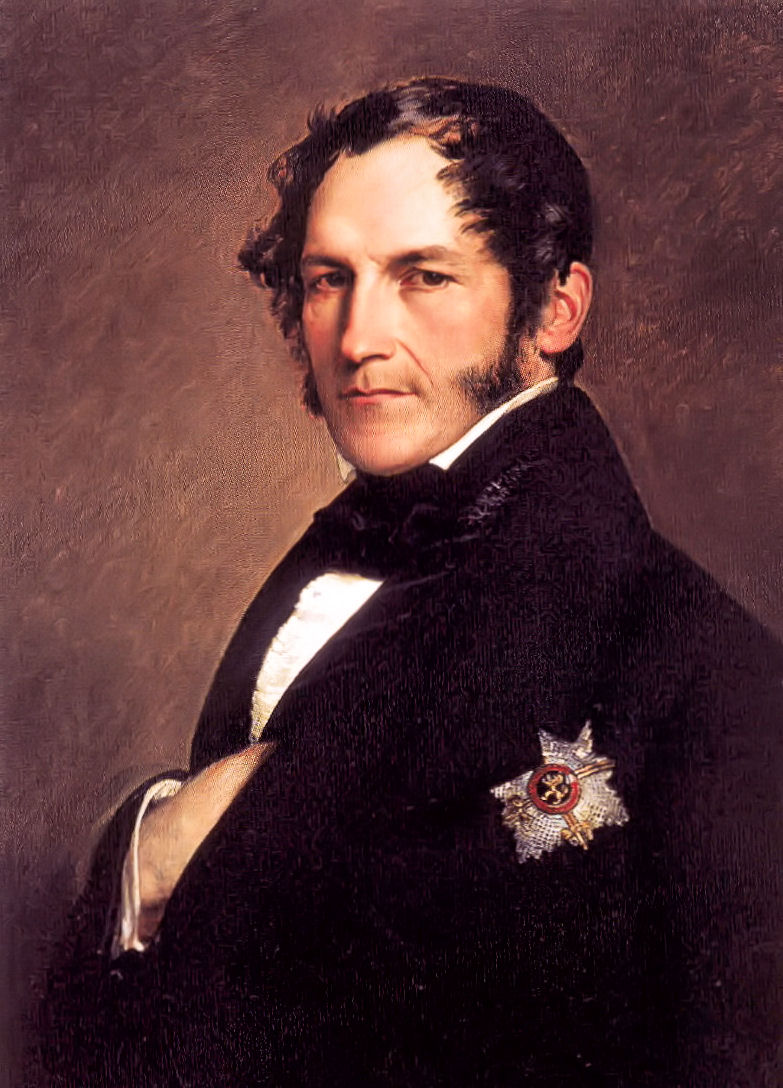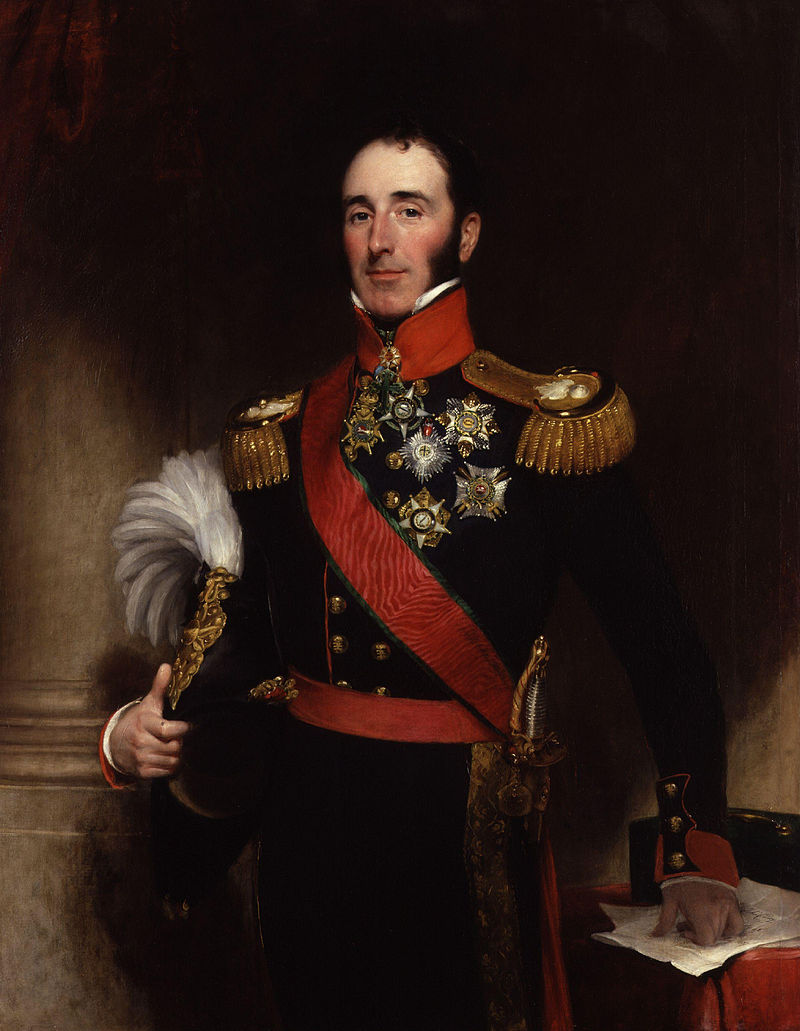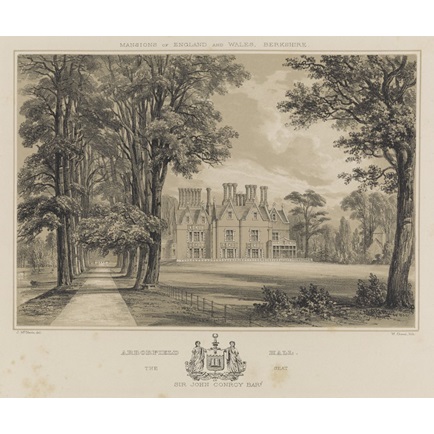by Susan Flantzer
© Unofficial Royalty 2018

Credit – Wikipedia
Sir James Clark served as Queen Victoria’s Physician-in-Ordinary from 1837 – 1860.
Sir James Clark was born on December 14, 1788, at Cullen House in Cullen, Banffshire, Scotland where his father David Clark, married to Isabella Scott, was the butler of James Ogilvy, 7th Earl of Findlater. Clark started his education at the kirk (church) school in Cullen. When his parents moved to Kilnhillock, Clark then attended the nearby Fordyce School, a prestigious grammar school in the village of Fordyce, Banffshire, Scotland. Clark intended to be a lawyer and enrolled at the University of Aberdeen. He worked for a short time as a lawyer before abandoning his law career and enrolling at the University of Edinburgh to study medicine and in 1809, Clark qualified as a member of the Royal College of Surgeons of Edinburgh.
After further medical training at the Royal Hospital Haslar in Hampshire, England, Clark began a career in the medical service of the Royal Navy during the Napoleonic Wars. While on board naval ships, he developed a life-long passion for meteorology and how the weather interacts with the human body. At the end of the wars, Clark enrolled in the University of Edinburgh and graduated with an M.D. degree in 1817.
In 1818, Clark offered to accompany a patient suffering from advanced tuberculosis to Italy. He then settled in Rome in 1819, established a medical practice there, and treated many wealthy British expatriates. One of his patients was the poet John Keats who was quite ill. Clark concluded that his illness was a stomach ailment caused by stress and put Keats on a starvation diet and regularly bled him. Keats died after four months of treatment by Clark who has since been criticized for his failure to diagnose tuberculosis.
While serving in the Royal Navy, Clark had visited the home of the Reverend John Stephen in Nassau in the Bahamas. He fell in love with Rev. Stephen’s daughter Barbara. The couple married in 1820 and had one son John Forbes Clark. In 1826, Clark and his family moved to London where he set up a practice on George Street, Hanover Square.
During the summers, Clark acted as physician to Prince Leopold of Saxe-Coburg-Saalfeld (King Leopold I of the Belgians from 1831) as he traveled through the spa towns of Germany. Through this connection, in 1835, Clark was appointed physician to Leopold’s sister the Duchess of Kent (born Princess Victoria of Saxe-Coburg-Saalfeld), the widow of King George III’s son Prince Edward, Duke of Kent. The Duchess’ only child Princess Victoria of Kent was the heir to the British throne. Several months after her accession to the throne in June 1837, Queen Victoria appointed Clark her Physician-in-Ordinary and created him Baronet of St. George’s Hanover Square, London.
Even though Clark treated renowned patients, his abilities as a medical doctor were doubtful. George Villiers, 4th Earl of Clarendon said he would not trust Clark to “attend a sick cat.” It seems his medical career owed more to his diplomatic treatment of his patients rather than his medical competence. There were several instances of his medical incompetence while he served as the royal Physician-in-Ordinary.

Lady Flora Hastings; Credit – Wikipedia
In 1839, Clark’s misdiagnosis and a desire to please Queen Victoria led the court into the Lady Flora Hastings scandal. Lady Flora, a lady-in-waiting to the Duchess of Kent, went to see Clark because of nausea, pain, and swelling in her lower abdomen and back. Clark was confused that Flora was still able to do her job if she was really ill. He tried to examine her under her stays but Lady Flora refused. He then asked her if she was secretly married, intimating that she was pregnant, which Flora strongly denied. Clark insisted that Flora confess to save her reputation. It appeared that Clark was ignorant of any condition other than pregnancy that could cause a distended stomach. He prescribed rhubarb pills and a lotion to rub on her stomach. At that same time, some of the Queen’s ladies and Baroness Lehzen (Queen Victoria’s former governess) noticed that Lady Flora’s abdomen appeared swollen and rumors of pregnancy began swirling around the court.
Eventually, Lady Flora agreed to a doctor’s examination and Sir James Clark enlisted Sir Charles Clarke, a specialist in women’s health, to do the examination. A February 17, 1839 examination showed that Flora could not be pregnant because she was still a virgin. Queen Victoria apologized to Lady Flora and hoped that the situation was over but it was not. Despite the fact that the news about Flora’s innocence became public, rumors did not stop, and she still attracted attention with her growing belly. Lady Flora felt that she had to defend herself and published her version of events in the form of a letter that appeared in The Examiner, and blamed “a certain foreign lady” (Lehzen) for spreading the rumors.
In June, it became apparent that Lady Flora, still performing her duties at court, was mortally ill. On June 27, 1839, Queen Victoria visited Flora and was horrified by the changes in her appearance. Lady Flora died on July 5, 1839, at the age of 33. An autopsy carried out according to Lady Flora’s last wishes showed that she died from a cancerous liver tumor.
In the September 1839 issue of the medical journal The Lancet, Dr. John Fisher Murray wrote an article An Autopsy of a Court Doctor, in which he described a number of other diseases, the symptoms of which were shown in Lady Flora, which Sir James Clark did not take into account upon treating her. Despite the fact that Clark was considered incompetent, he remained in royal service.

Victoria, Princess Royal with her father Prince Albert, 1841; Credit – Wikipedia
In January 1842, Victoria, Princess Royal (Vicky), the 14-month-old eldest child of Queen Victoria and Prince Albert became ill and Clark was called in to examine her. Prince Albert had objected to Clark due to his terrible mishandling of the Lady Flora Hastings affair in 1839. Clark diagnosed Vicky’s illness as a minor ailment and, incorrectly as it turned out, prescribed calomel, a laxative, and then, a common medicine. Unknown at that time, calomel, which contained mercury chloride, was toxic. Vicky did not become better but rather became seriously ill. Albert confronted Victoria on the incompetence of the nursery staff. In a furious note to his wife, Albert wrote, “Dr. Clark has mismanaged the child and poisoned her with calomel and you have starved her. I shall have nothing more to do with it, take the child away and do as you like and if she dies you will have it on your conscience.” Vicky survived and Clark still remained in royal service.

The last moments of HRH the Prince Consort, Photo Credit: Wellcome Library, London
Clark’s incompetence even occurred as Prince Albert was on his deathbed. In late November 1861, Albert complained of shoulder, leg, back, and stomach pain and could not eat or sleep. Clark had been in semi-retirement since 1860 and William Jenner had been appointed Physician-in-Ordinary in 1861. Both Clark and Jenner examined Albert and then assured Victoria that Albert would be better in two or three days. Lord Palmerston, the Prime Minister, had no faith in Clark at all and wanted other doctors called in. Queen Victoria refused to doubt Clark’s competence.
However, Albert’s condition continued to worsen. Knowing Clark’s nature to please his patients, it is possible that he decided to conceal the serious nature of Albert’s condition but he was also clearly incompetent. On December 9, 1861, Jenner, who was an expert on typhoid fever, finally said that Albert had typhoid fever. Victoria continued to hope for a recovery and on December 11, she was finally told of Albert’s dismal prognosis. At 10:50 PM on December 14, 1861, Albert died in the presence of his wife and five of their nine children. Although Jenner diagnosed Albert’s final illness as typhoid fever, Albert’s modern biographers have argued that the diagnosis is incorrect. Albert had been complaining of stomach pains for two years and this may indicate that he died of some chronic disease, perhaps Crohn’s disease, kidney failure, or cancer. It is possible that Clark’s incompetence in the years preceding Albert’s death had a role to play in the failure of Albert’s health.

Sir James Clark, 1867; Photo Credit – Wikipedia
Clark retired to Bagshot Park, a house in Surrey, England granted to him by Queen Victoria. He died there on June 29, 1870, at the age of 81, and was buried at Kensal Green Cemetery in London.
This article is the intellectual property of Unofficial Royalty and is NOT TO BE COPIED, EDITED, OR POSTED IN ANY FORM ON ANOTHER WEBSITE under any circumstances. It is permissible to use a link that directs to Unofficial Royalty.
Recommended Book – Serving Queen Victoria: Life in the Royal Household by Kate Hubbard
Works Cited
- Baird, Julia. Victoria The Queen. Random House, 2016.
- http://history.furman.edu/benson/hst323/Sir_James_ClarkDNB.pdf. Accessed 16 May 2018.
- Hubbard, Kate. Serving Victoria: Life In The Royal Household. Harper Collins Publishers, 2012.
- “James Clark”. It.Wikipedia.Org, 2018, https://it.wikipedia.org/wiki/James_Clark. Accessed 16 May 2018.
- “Sir James Clark, 1st Baronet”. En.Wikipedia.Org, 2018, https://en.wikipedia.org/wiki/Sir_James_Clark,_1st_Baronet. Accessed 16 May 2018.



















